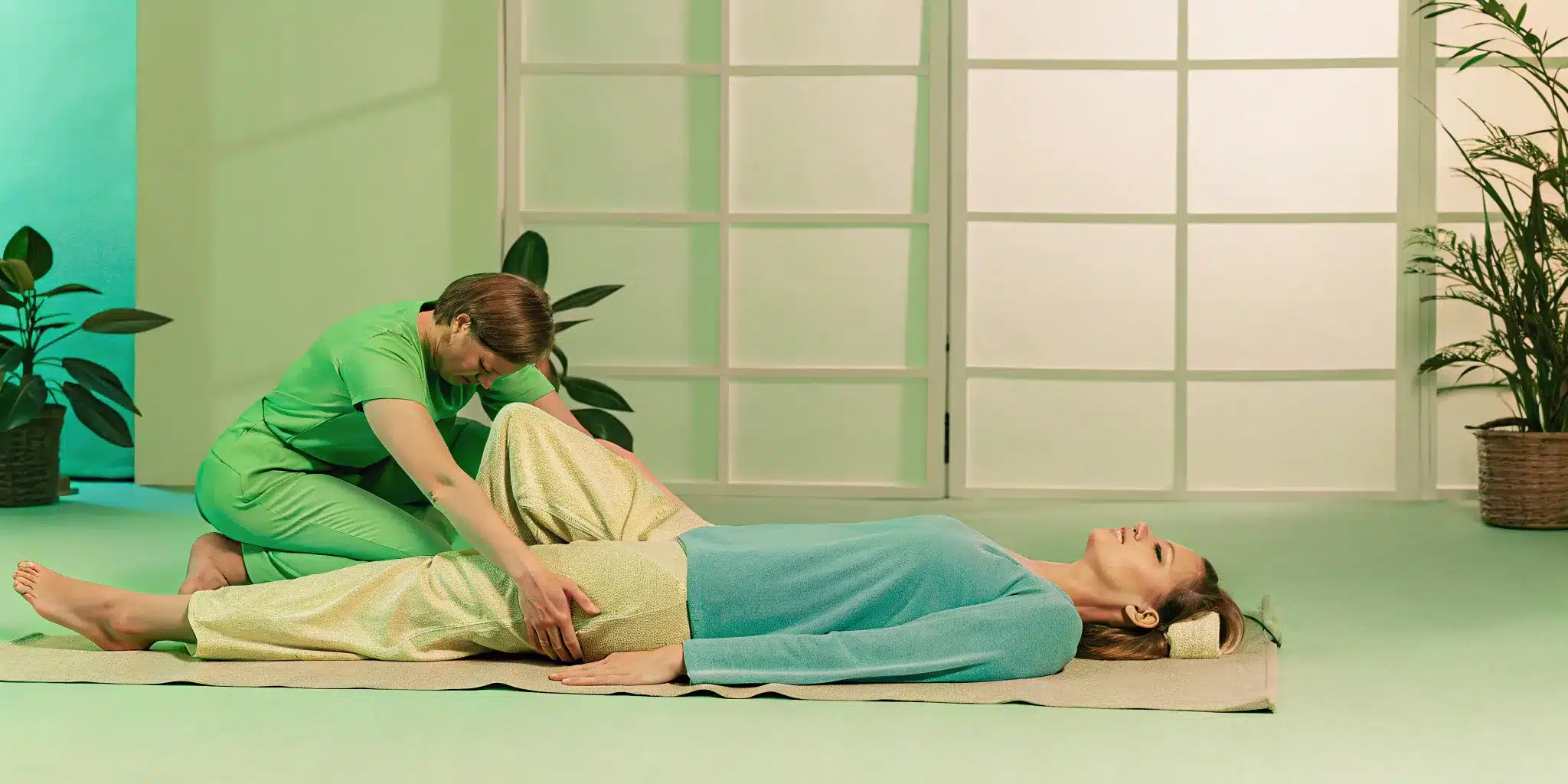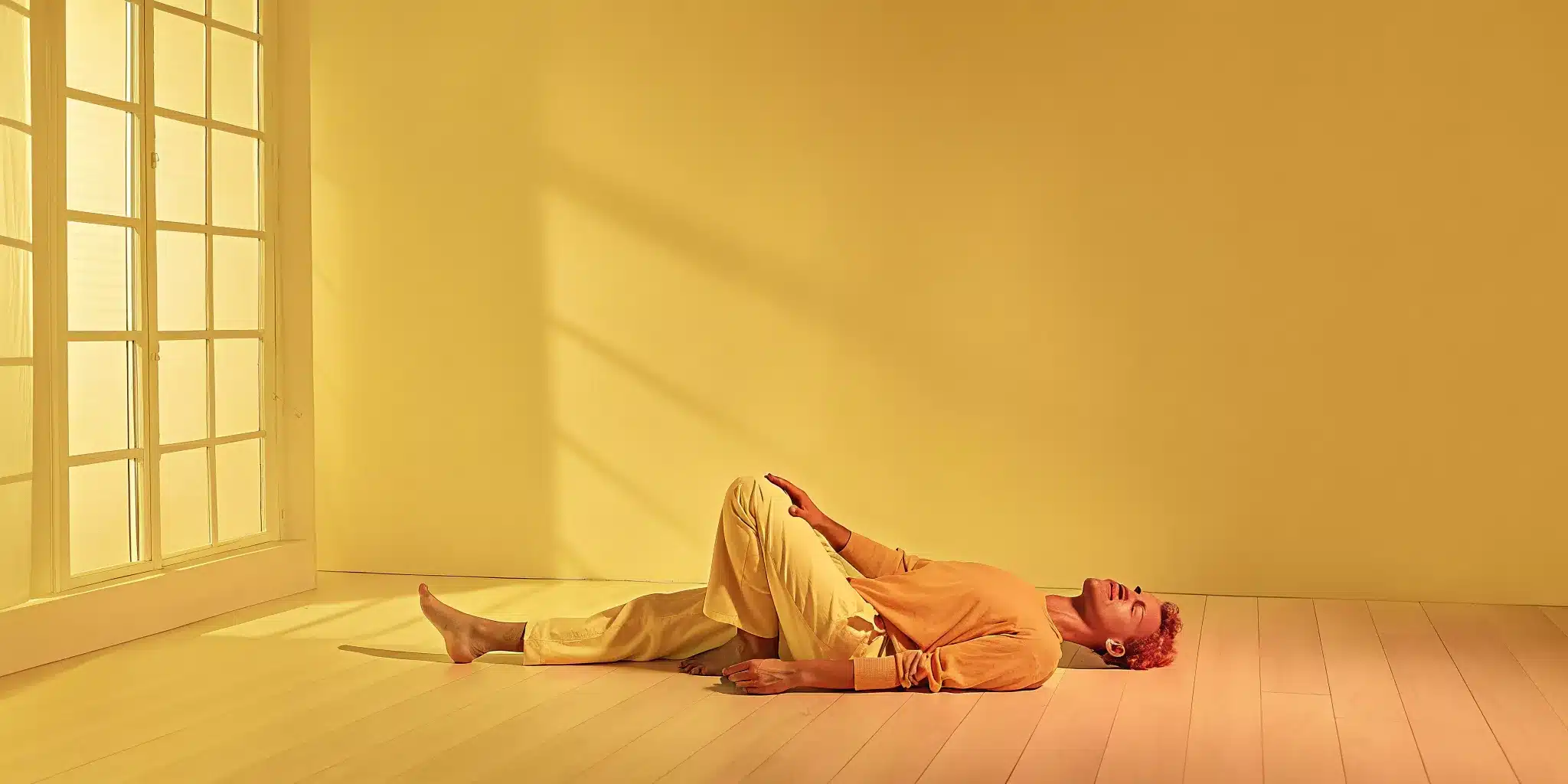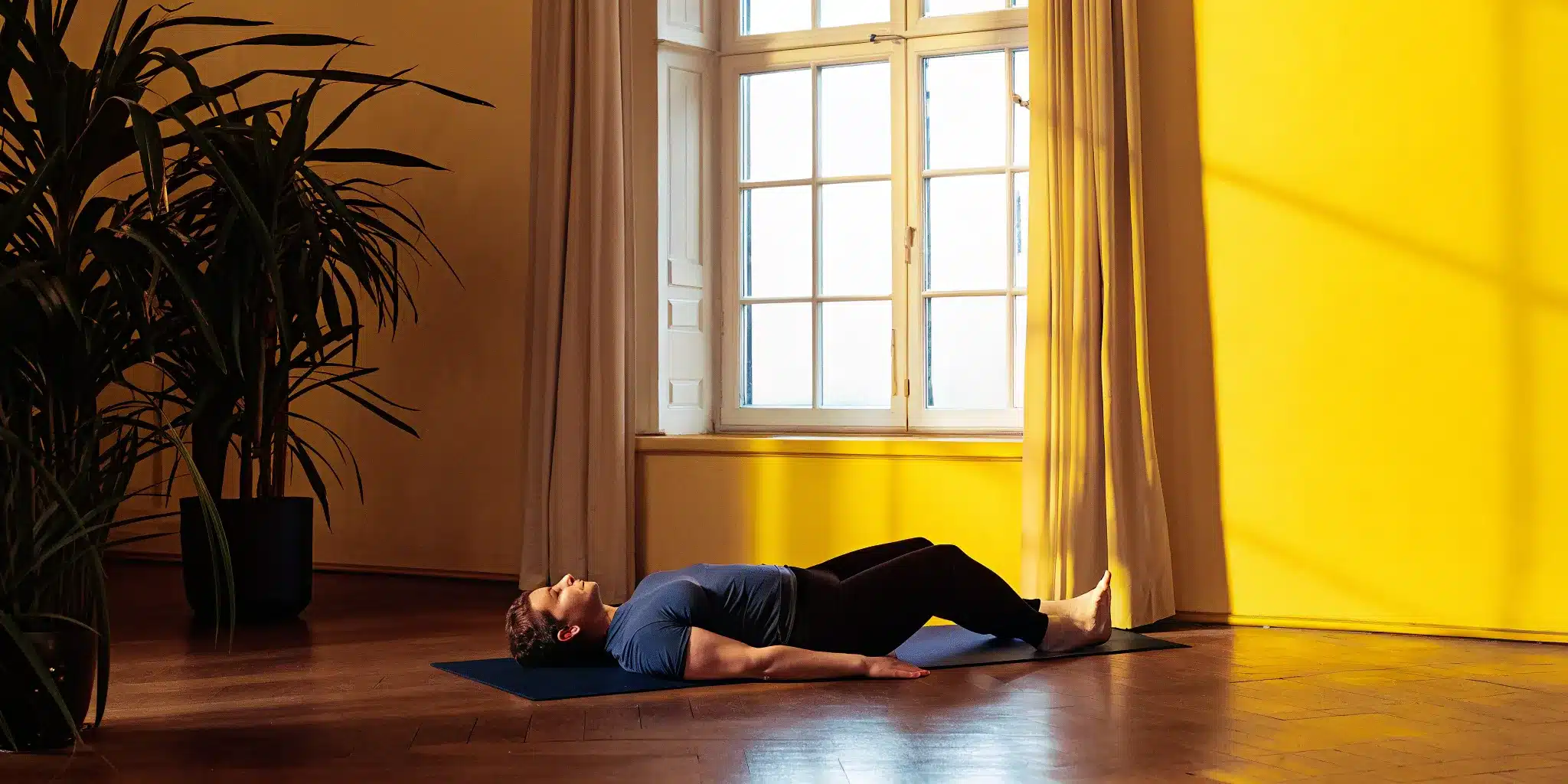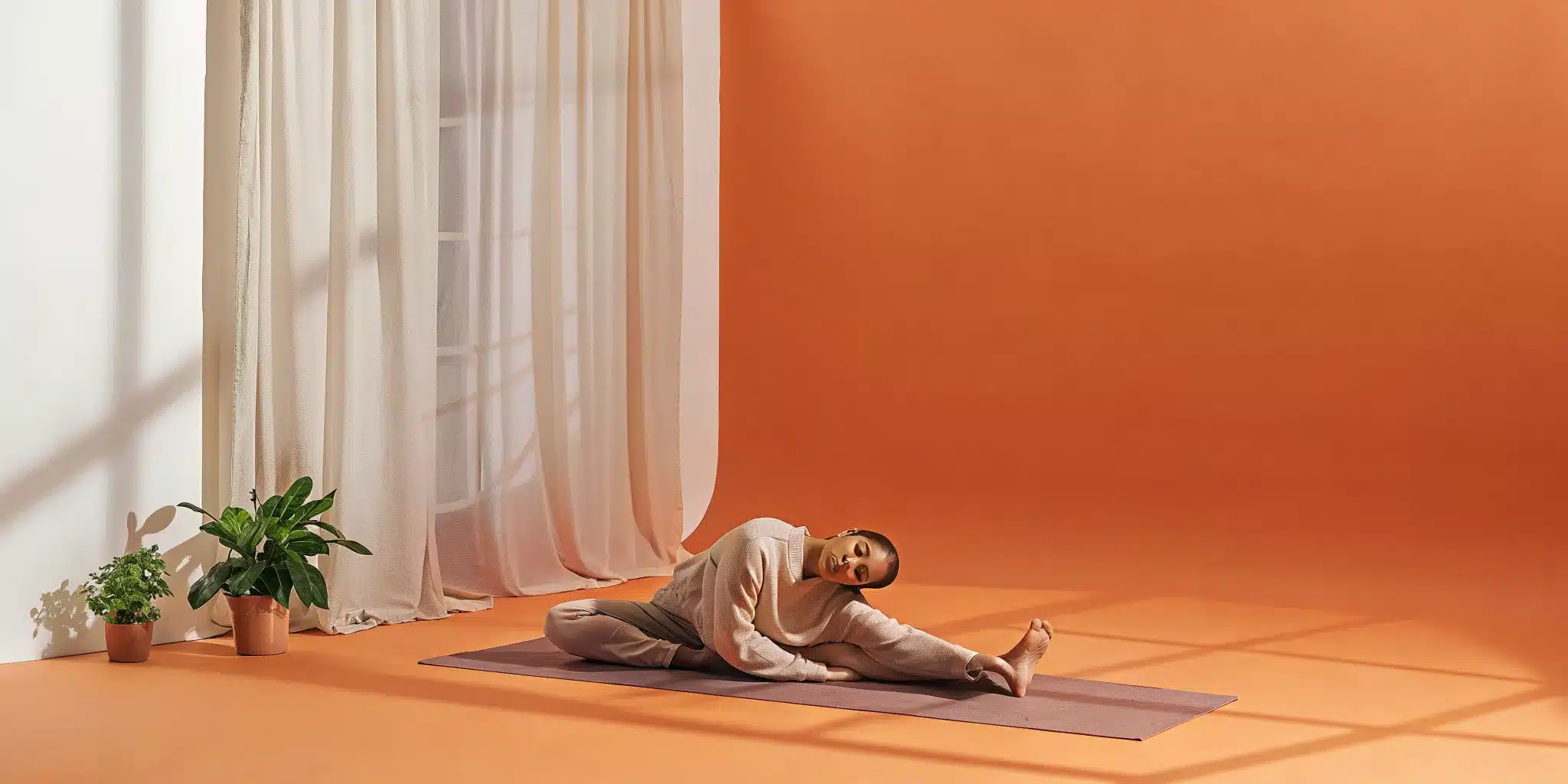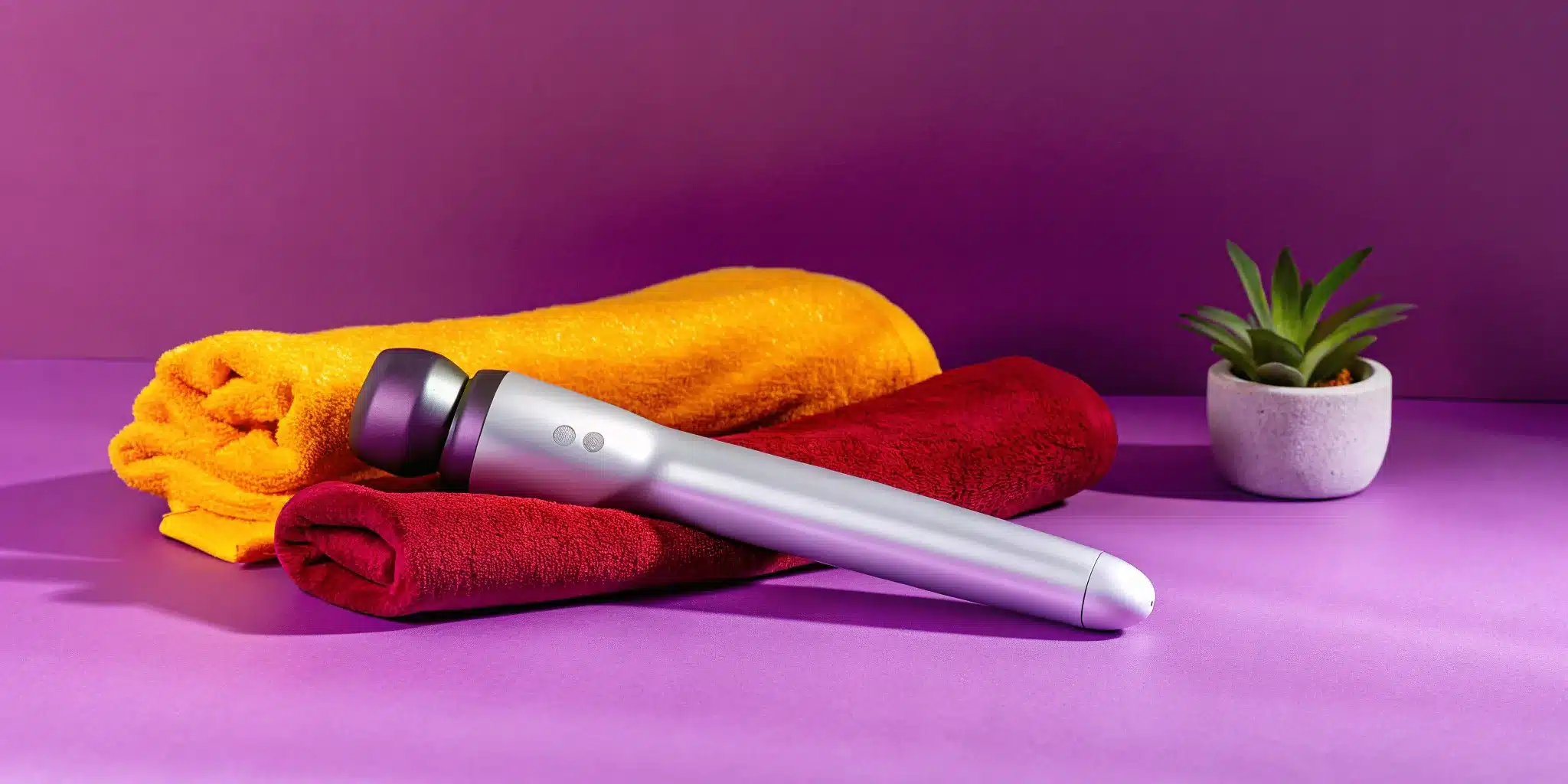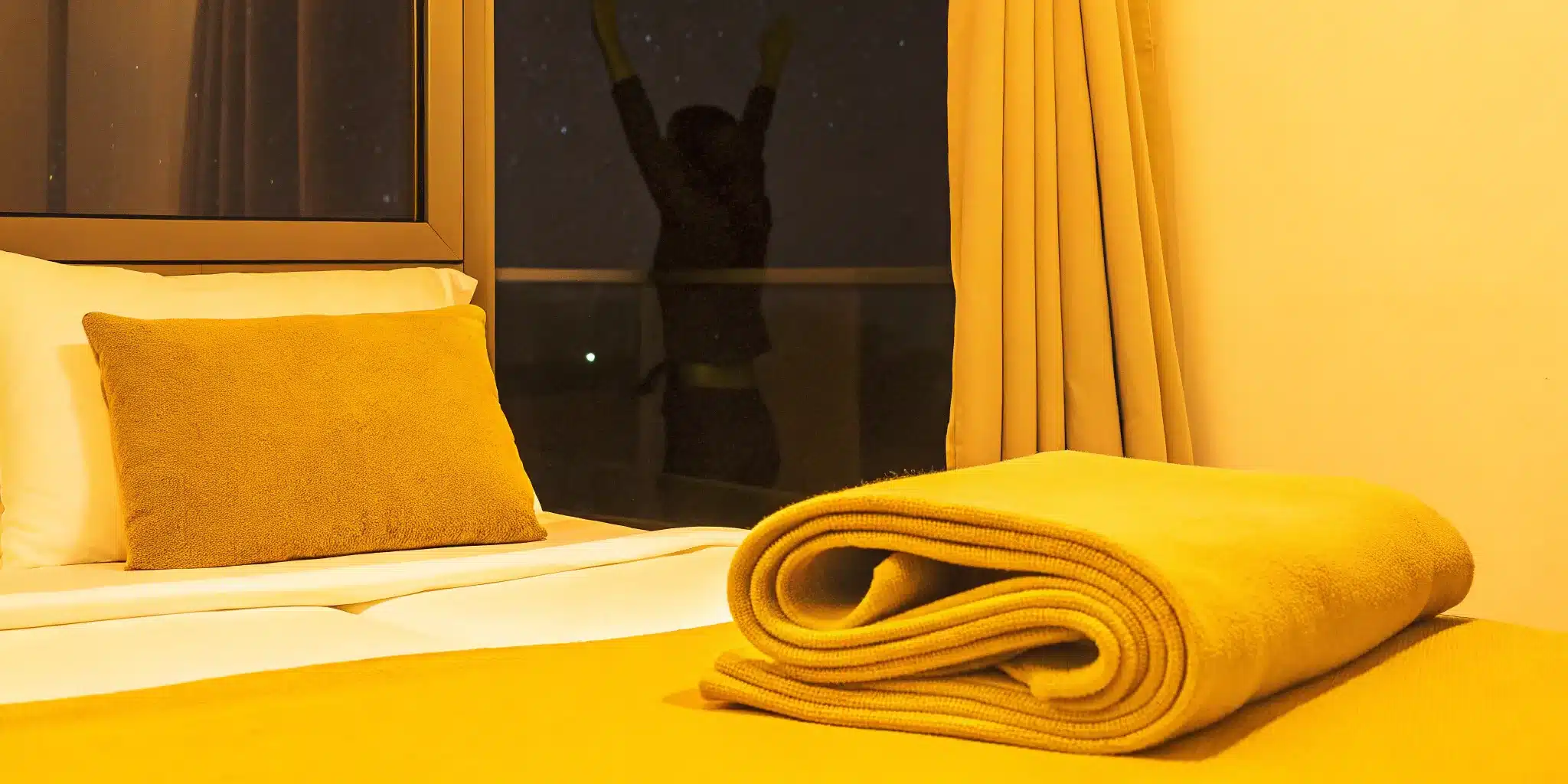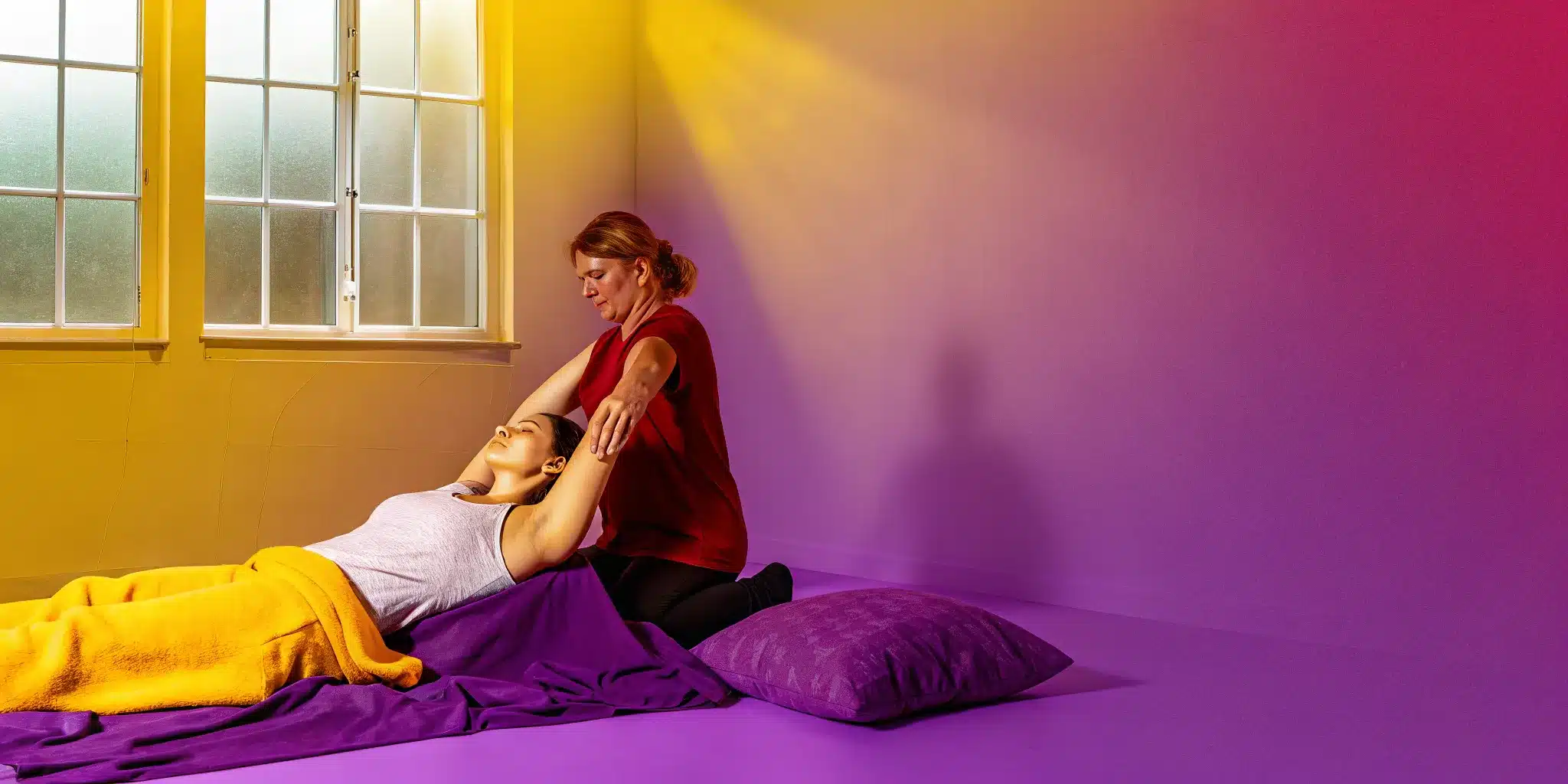It’s easy to blame stiffness and aches on getting older, writing them off as an unavoidable part of life. But what if that’s not the whole story? More often than not, these limitations are due to a decreased range of motion, which is something you have the power to change, no matter your age. The real purpose of range of motion isn’t just about being able to touch your toes; it’s about maintaining your independence and living without chronic discomfort. Believing you’re ‘too old’ or ‘not flexible enough’ can keep you stuck in a cycle of pain. Let’s clear up some common myths and show you how improving your mobility is more accessible than you think, helping you feel better in your body.
Key Takeaways
- Focus on Functional Movement, Not Just Flexibility: True mobility isn’t about being able to do the splits; it’s about your joints moving freely and without pain during everyday activities. Improving your range of motion is the key to making daily life feel easier.
- Your Daily Habits Define Your Mobility: Age is just one factor in stiffness—how you move (or don’t move) throughout the day has a much bigger impact. Small, consistent changes to your routine can combat the restrictions caused by a sedentary lifestyle.
- Gentle Consistency Outperforms Aggressive Stretching: Pushing into pain is counterproductive. Lasting improvements come from gentle, regular practices like dynamic warm-ups, strength training, and professional assisted stretching that work with your body, not against it.
What Is Range of Motion (And Why It Matters)?
Think about your daily movements: reaching for a coffee mug on the top shelf, bending down to tie your shoes, or turning your head to check your blind spot while driving. All of these actions depend on your body’s range of motion. Simply put, range of motion (ROM) is the full movement potential of a joint—how far it can bend, straighten, and rotate in every direction. It’s a key indicator of your overall mobility and joint health.
Good ROM allows your body to function efficiently and comfortably. When your joints can move through their full, intended paths, you place less strain on surrounding muscles and ligaments. This not only makes everyday tasks feel easier but also significantly lowers your risk of injury. Over time, factors like aging, a sedentary lifestyle, old injuries, or certain health conditions can cause our range of motion to decrease. You might notice a little more stiffness in the morning or find that certain movements feel tight or restricted. This is your body’s signal that your joints aren’t moving as freely as they could be. Paying attention to and actively working on your ROM is a direct investment in your long-term mobility and quality of life.
Active vs. Passive ROM: What’s the Difference?
When we talk about range of motion, it’s helpful to know the difference between active and passive movement. Active Range of Motion (AROM) is what you can do all on your own. It’s when you use your own muscles to move a joint through its full path, like when you lift your arm above your head.
Passive Range of Motion (PROM), on the other hand, is when an outside force moves your body for you. This could be a therapist, a partner, or even a machine guiding your joint through its range of motion without you having to engage your muscles. This is especially useful for gently increasing flexibility and mobility without putting stress on the body.
How Is Range of Motion Measured?
You might be wondering if range of motion is something you can actually measure. The answer is yes! Professionals like physical therapists and certified stretch practitioners use a special tool called a goniometer to measure the precise angle of your joints. It looks a bit like a protractor and allows them to get an accurate reading of your joint’s ability to bend and straighten.
This measurement is incredibly useful. It provides a clear baseline of your current mobility, helps identify specific areas of restriction, and allows you to track your progress over time. Seeing those numbers improve is a fantastic way to stay motivated as you work on your flexibility.
The Three Main Types of Joint Movement
To get a bit more specific, joint movement is generally categorized into three main types. Understanding them can help you recognize what kind of movement you’re doing in your daily life or during a stretching session.
- Active Range of Motion (AROM): As we covered, this is movement powered entirely by you. Think of doing leg lifts or arm circles.
- Passive Range of Motion (PROM): This is when a joint is moved by an external force. Professional assisted stretching is a perfect example of PROM, where a practitioner gently moves your limbs to improve flexibility.
- Active-Assistive Range of Motion (AAROM): This is a hybrid approach. You initiate the movement with your own muscles, and an external force helps you complete it, often to go a little further than you could on your own.
Why a Healthy Range of Motion Is a Game-Changer
Think of range of motion as your body’s currency for movement. The more you have, the richer your physical life can be. It’s not just for athletes or yogis; a healthy range of motion is what allows you to perform simple daily tasks without pain or strain, from reaching for the top shelf to bending down to tie your shoes. When your joints can move through their full, intended arcs, your entire body functions more efficiently.
Improving your range of motion is one of the most effective ways to invest in your long-term well-being. It helps protect you from injury, eases chronic aches, and gives you the freedom to live an active, fulfilling life. Let’s look at the specific ways that focusing on your mobility can make a real difference.
Prevent Injuries and Protect Your Joints
When your joints are stiff and your muscles are tight, your body is less prepared to handle sudden movements or unexpected stress. Think of it like a stiff, old rubber band—it’s much more likely to snap than a flexible new one. A healthy range of motion ensures that your joints can move comfortably and absorb impact effectively. This reduces your risk of sprains, strains, and other injuries because your body can distribute force evenly instead of overloading a single, tight area. By keeping your joints mobile, you’re building a more resilient body that’s better equipped to handle whatever life throws your way.
Make Everyday Movements Easier
Do you ever groan when you have to get up from a low chair? Or feel a twinge in your back when you pick something up off the floor? These are often signs of limited range of motion. When your body can move well, daily activities feel effortless. Good mobility prevents your body from creating compensation patterns—like arching your back to lift something because your hips are tight. These compensations can lead to poor posture, muscle imbalances, and chronic pain over time. Improving your range of motion helps you move with efficiency and ease, making everyday life feel much more comfortable.
Improve Your Athletic Performance
Whether you’re a weekend warrior, a dedicated gym-goer, or just enjoy a brisk walk, your range of motion directly impacts your performance. Better mobility allows you to achieve a deeper squat, a more powerful golf swing, or a longer stride when you run. It’s about allowing your joints to reach their full potential so you can generate more force and move more efficiently. This not only helps you perform better but also reduces the risk of injury during your favorite activities. By working on your mobility, you’re not just training harder; you’re training smarter.
Find Relief from Aches and Pains
Chronic pain is often a signal that something in your body is out of balance. Limited range of motion in one area, like your hips, can force other parts of your body, like your lower back, to work overtime. This constant overcompensation leads to strain, inflammation, and persistent pain. By improving your mobility, you can restore proper movement patterns and take the pressure off those overworked areas. This helps correct your body alignment and allows your muscles and joints to function the way they were designed to, often leading to significant pain relief.
Feel Better, Mentally and Physically
The connection between how your body feels and how you feel mentally is incredibly strong. Living with constant pain and physical limitations can be frustrating and draining, impacting your mood and overall quality of life. In fact, some studies show that limited mobility can even affect your mental health. Gaining back your freedom of movement is empowering. It allows you to participate more fully in activities you love, boosts your confidence, and reduces the mental stress that comes with feeling physically restricted. When your body moves better, you simply feel better—inside and out.
What Limits Your Range of Motion?
Ever feel like your body is fighting you on a simple movement, like reaching for something on a high shelf or bending down to tie your shoe? It’s a common feeling, and it’s often tied to your range of motion. Several factors can influence how freely your joints move, and understanding them is the first step toward feeling better. It’s not just one thing, but a combination of your body’s unique design, your daily routines, your health history, and even the natural process of aging. Let’s look at what might be holding you back.
Your Body’s Natural Structure
At its core, range of motion is simply how far you can move a joint in any direction. This is largely determined by the soft tissues surrounding it—your muscles, ligaments, and tendons. Think of them as the support system for your joints. Everyone’s body is built a little differently, which means some of us are naturally more flexible than others. Your unique anatomy and genetics set the baseline for your mobility. While you can’t change your bone structure, you can absolutely improve the flexibility of the muscles and connective tissues that allow for smooth, easy movement.
Your Daily Habits and Activity Level
How you spend your days has a huge impact on your mobility. If you sit at a desk for hours, your hips and back can become incredibly tight. The same goes for any repetitive motion or a generally inactive lifestyle. When your muscles aren’t regularly moved through their full range, they can shorten and tighten, restricting your movement. This doesn’t just feel uncomfortable; it can lead to poor posture, painful muscle imbalances, and put extra strain on other parts of your body. The good news is that habits can be changed, and introducing more movement can make a world of difference.
Underlying Health Conditions
Sometimes, limited range of motion is your body’s way of telling you something else is going on. Past injuries, surgeries, or joint infections can all lead to stiffness and a decreased ability to move freely. Swelling and pain are your body’s protective mechanisms, but they can also prevent you from moving a joint properly, creating a cycle of stiffness. Chronic conditions like arthritis directly affect the health of your joints, causing inflammation and pain that can severely limit mobility. If you suspect an underlying condition is at play, it’s always a good idea to talk with your doctor.
How Age Plays a Role
It’s true that our bodies change as we get older. Over time, our connective tissues can lose some of their elasticity, and joint cartilage can wear down, which may lead to a natural decrease in range of motion. But this is not a life sentence of stiffness! A sedentary lifestyle often plays a much bigger role than age itself. By committing to staying active, you can maintain and even improve your mobility for years to come. Consistent, gentle movement helps keep your joints lubricated and your muscles pliable, proving that age is just one factor among many.
Range of Motion Myths, Busted
When it comes to our bodies and how they move, there’s a lot of information out there—and not all of it is helpful. Certain ideas about flexibility and movement get repeated so often that we accept them as fact. But sometimes, these common beliefs can actually hold you back from feeling your best and moving freely. Let’s clear the air and bust a few of the most common myths about range of motion. Getting the facts straight is the first step toward making real, lasting improvements in how you feel every day.
Myth: “No Pain, No Gain”
We’ve all heard this one before, but when it comes to improving your range of motion, it’s not only untrue—it’s counterproductive. Pushing your body into pain can cause your muscles to tense up as a protective response, which is the exact opposite of what you want. True, lasting gains in mobility come from working with your body, not against it. The goal is to find a gentle stretch, not a sharp or painful sensation. The key to creating long-term results is proper muscular engagement, which means you’re using the right technique to encourage your joints and muscles to move more freely, without forcing them.
Myth: “I’m Too Old to Get More Flexible”
This is one of the most common reasons people give for not working on their mobility, but it’s simply not true. While our bodies certainly change as we get older, you never lose the ability to improve your range of motion. In fact, it becomes even more important with age. Consistent, gentle movement and stretching can help you maintain your independence and quality of life. Mobility exercises can improve your strength, balance, and coordination, which helps reduce the risk of falls and makes daily activities feel easier. It’s never too late to start moving better and feeling younger.
Myth: “Flexibility and Mobility Are the Same”
While these two terms are often used interchangeably, they actually describe different things. Understanding the difference is key to addressing your body’s needs effectively. Think of it this way: flexibility refers to the ability of a muscle to lengthen, like when you’re stretching your hamstring. Mobility, on the other hand, is about a joint’s ability to move through its entire range of motion actively. You need flexibility to have good mobility, but mobility also requires strength and control. You can be flexible without being mobile, which is why a balanced approach that includes both stretching and strengthening is so important.
Myth: “You Have to Stretch Aggressively”
The idea that you need to hold painful stretches for minutes on end to see results is a major misconception. In reality, consistency is far more important than intensity. You don’t need to push your body to its absolute limit to make progress. In fact, research on stretching has found that holding one gentle, static stretch for just 15 to 30 seconds per day is enough to increase range of motion over time. The takeaway? A few minutes of mindful, consistent stretching each day will do more for your body than an occasional, aggressive session. It’s about creating a sustainable habit, not an ordeal.
How You Can Improve Your Range of Motion
Feeling limited by stiffness or pain can be frustrating, but the good news is that you have the power to improve your range of motion. It’s not about forcing your body into painful positions or spending hours at the gym. Instead, it’s about incorporating consistent, gentle practices into your life that encourage your joints and muscles to move more freely. By focusing on a few key strategies, you can gradually reclaim your mobility, reduce discomfort, and make daily activities feel easier and more enjoyable. Let’s walk through some simple, effective ways to get started.
Incorporate Dynamic Movements
If your warm-up routine still looks like holding a hamstring stretch for 30 seconds, it’s time for an update. Dynamic stretching is about moving your body through a full range of motion to warm up your muscles for activity. Think gentle leg swings, arm circles, or torso twists. Unlike static stretching (holding a single position), dynamic movements gradually increase your reach and speed, which helps prepare your muscles for activity and tells your nervous system it’s time to get moving. Adding five to ten minutes of dynamic stretching before a walk, workout, or even just to start your day can make a huge difference in how fluid and ready your body feels.
Focus on Strength Training
Building strength is one of the best things you can do for your mobility. Strong muscles act as powerful support systems for your joints, which helps them stay stable and healthy. When you engage in resistance exercises, focus on performing each movement through its complete range of motion. For example, when doing a squat, lower down as far as you comfortably can while maintaining good form. This practice not only builds muscle but also actively encourages your joints to move through their full, intended path. Over time, this can lead to significant gains in both strength and flexibility, as it enhances the stability of joints.
Try Professional Assisted Stretching
Sometimes, you need a helping hand to get the results you’re looking for. Professional assisted stretching is a fantastic way to safely explore a deeper range of motion than you could achieve on your own. With a trained professional guiding you, your body can fully relax into a stretch, allowing for greater release in tight muscles and stiff joints. This personalized approach is especially helpful for targeting stubborn problem areas and can support overall mobility in a gentle yet highly effective way. It takes the guesswork out of stretching and ensures you’re doing it correctly and safely.
Create a Simple Self-Care Routine
Consistency is more important than intensity. You don’t need to commit to an hour-long flexibility session every day to see results. Instead, try weaving short, simple mobility exercises into your existing routine. Maybe it’s a few gentle neck rolls and shoulder shrugs at your desk, or perhaps you spend ten minutes stretching on the floor while you watch your favorite show. Creating a small, manageable habit makes you more likely to stick with it. These regular self-care practices can prevent stiffness from setting in and gradually promote flexibility over time, making a big impact on how you feel day-to-day.
How to Track Your Progress
Noticing how far you’ve come is a powerful motivator. While a physical therapist might use a special tool called a goniometer to measure joint angles, you can easily track your progress at home. Simply pay attention to how your body feels. Can you reach a little further when you bend over? Does twisting to look behind you in the car feel easier? You could even take a quick photo or video of yourself doing a specific stretch each week. Being able to see and feel the changes will inspire you to keep going and help you monitor improvements on your journey to better mobility.
Related Articles
- How to Improve Mobility After 60: A Complete Guide – STRETCHMED
- 10 Benefits of Stretching: Feel & Move Better – STRETCHMED
- Benefits of a 1-on-1 Stretch Therapist: Improve Flexibility & Reduce Pain – STRETCHMED
Frequently Asked Questions
How can I tell if my range of motion is poor? A great way to check in with your body is to notice how you feel during everyday tasks. Do you feel a pinch in your shoulder when you reach for something on a high shelf? Is it a struggle to bend down and tie your shoes? Or maybe turning your head to check your blind spot in the car feels stiff. These little moments of restriction, tightness, or discomfort are often the first signs that your joints aren’t moving as freely as they could be.
Is stretching the only way to improve my range of motion? Not at all! While stretching is a huge piece of the puzzle, it works best as part of a team. Strength training is just as important because strong muscles provide the support and stability your joints need to move safely through their full range. Think of it this way: stretching helps create new movement potential, and strength helps you control and use that new mobility effectively in your daily life.
How long will it take to notice a difference in my mobility? There isn’t a magic timeline, as everyone’s body is different. The most important factor is consistency. You’ll likely feel a little better and looser right after a good stretch, but lasting change comes from making it a regular habit. Instead of looking for a dramatic overnight transformation, pay attention to the small victories over weeks and months, like being able to reach a little further or feeling less stiff in the morning.
I’m worried about making my pain worse. How do I know if I’m pushing too hard? This is such an important question, and the answer is to always listen to your body. A good stretch should feel like a gentle, comfortable pull or release in the muscle, never a sharp, shooting, or intense pain. If you feel any sensation that makes you wince or hold your breath, that’s your body’s signal to ease up. The goal is to work with your body, not against it.
What’s the real benefit of professional assisted stretching versus just stretching on my own? When you stretch by yourself, your muscles are still partially engaged to hold the position. With professional assisted stretching, a trained practitioner does the work for you. This allows your body to completely relax, which often means you can achieve a deeper, more effective stretch safely. A professional can also isolate specific muscles and ensure your form is perfect, helping you get better results without the risk of injury.

